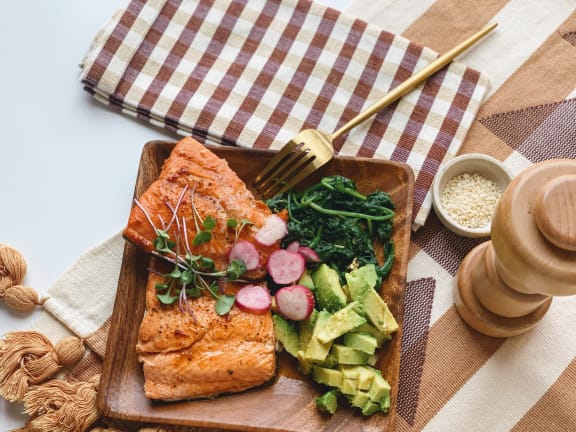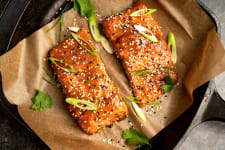
Everything You Need to Know About Captain Cuts
February 15th, 2021The Unsung Glory of the Tail Piece
Trimmed from the same sockeye and coho harvest that we use for our portioned fillets, our captain cuts are packed with all the quality, flavor, and nutrition that you’d expect from any of our salmon offerings — just in a smaller form. Rather than being cut into whole 6-ounce fillets, captain cuts of sockeye and coho are anywhere between 2 and 4 ounces per piece, packaged together for a combined total weight of 6 to 8 ounces.
What makes our captain cuts special is their size. (Good things come in small packages, after all.) Seafood lovers will find that having captain cuts in the kitchen gives them a little more versatility when cooking with wild Alaskan seafood. Think of captain cuts as your go-to protein for snackable seafood, for those times when you want fish and you want it fast, and for meals where you know you want to make a little extra (but not too much extra) for the captain and the crew gathered around your kitchen table.
Head to Tail Appreciation
We believe we have an ecological and ethical imperative to use as much of our harvest as we can to honor the bounty that nature provides us and to do our part in maintaining a sustainable fishing industry.
Since our individually-portioned products are weighed out to 6-ounces, we collect any remaining cuts of various weights to package as captain cuts. Having the flexibility to utilize smaller cuts allows us to offer our members as much of our delicious catch as possible while reducing waste that is typically produced during processing. We love how this helps us fulfill our pledge to uphold sustainable practices.
Sustainability aside, it turns out that we love having our captain cuts in the kitchen! An unexpected perk of having captain cuts on hand is that you’ll always have tail pieces to enjoy. That’s right, these thinner, asymmetrical cuts are a beautiful thing! Their size and shape explains why captain cuts cook up in a fraction of the time it would take to cook center cuts of salmon. These flatter portions also defrost a bit more quickly than center cuts, whether you’re thawing them in the refrigerator or doing a quick thaw in a bowl of cold water. They’re hands down the fastest fish option you’ll have, from freezer to frying pan.
Tail pieces also give you more surface area for seasonings on one side of the fillet, and more skin-to-pan contact on the other side. That means you’ve got a bigger canvas to work with when playing around with flavors — and having more skin in the game means a greater potential for crispy, crunchy, craveable texture.
How to Use Captain Cuts
They’re the ideal size for light meals, appetizers, and second helpings. In most cases, these portions cook up even faster than a full-sized fillet. To help you explore all the goodness that captain cuts have to offer, we’ve got some recipe ideas lined up for you in our blog posts dedicated to captain cuts and snacks. Or, try pan-searing captain cuts after picking up some tricks from our foolproof how-to guide, and you’ll have the means to convince even skin skeptics to enjoy every feature of their fillets.
Which package of captain cuts should you order? Sockeye or coho? You really can’t go wrong here. Buf if you really want to dial it in with your captain cuts, consider the flavor profile of your recipe and the cooking method you plan to use.
Sockeye salmon has a robust “salmon” flavor that makes it a great choice when you’re looking for it to stand out in especially bold preparations. There’s no chance that the sockeye will be overshadowed by something like a curry rub or mustard sauce. Sockeye’s salmon-forward taste often makes it a sea-foodie’s first choice.
Coho is the milder of the two, making it a good “starter salmon” for picky seafood eaters. Though it has a stronger taste than a mild white fillet of cod, for example, It isn’t quite as gamey as sockeye. But even seafood aficionados will want coho in their kitchen, as its subtle salmon flavor takes well to gentler cooking methods and milder flavor profiles.





